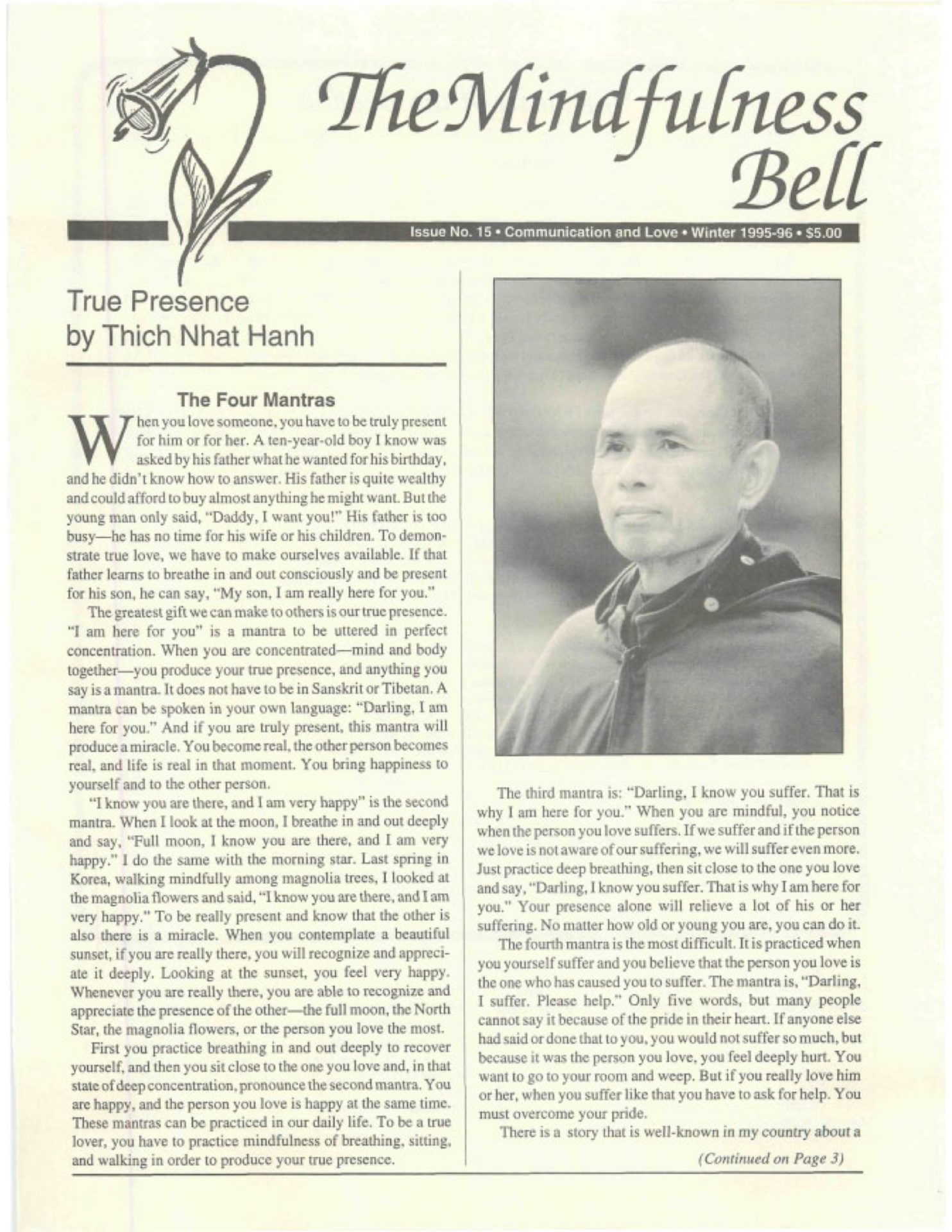By Brenda Carr
Many connections were resonating for me as I joined in apple meditation at the Omega retreat with Thay. As I crunched thoughtfully on my tart-sweet fall apple, lovingly delivered from the hands of local organic farmers, I recalled Thay’s instruction to Westerners to look deeply into their spiritual traditions for new insights into their jewels. I also recalled his observation that when Jesus offered bread at the “first supper” and asked his disciples to reflect on how it embodied his life,
By Brenda Carr
Many connections were resonating for me as I joined in apple meditation at the Omega retreat with Thay. As I crunched thoughtfully on my tart-sweet fall apple, lovingly delivered from the hands of local organic farmers, I recalled Thay's instruction to Westerners to look deeply into their spiritual traditions for new insights into their jewels. I also recalled his observation that when Jesus offered bread at the "first supper" and asked his disciples to reflect on how it embodied his life, he was asking them to undertake a practice of mindful attention to interbeing. As Thay says in Living Buddha, Living Christ, "The bread we eat is the whole cosmos." This insight into Christian communion as an opportunity to eat mindfully and awaken from forgetfulness was embodied in the apple meditation practice. As someone else in the Sangha noted, the apple in the Judeo-Christian tradition is such a problem fruit—the sign of the fall from grace and paradise. Like the bread, we found the apple to contain all of life—earth, decayed leaf, root, water, sap, sky, sun, blossom, laboring hands. To look deeply into the apple is to see it renewed as the apple of life, to be restored to paradise.

Life was so evident in the sharp crunch and crack of the lusty and delicious bites we all enjoyed together. This brought me back to my earliest memories of the Christian Eucharist where I felt embarrassed by the necessity of chewing the bread and swallowing the juice of the vine. As a young girl, I tried very hard, often with awkward results, to chew and swallow without making a sound. I assumed that the quieter and less physical the experience was, the holier it was. I also tried not to meet the eyes of the person who handed me the bread. I am not sure where I got these ideas of disembodied and ethereal transcendence, but it strikes me that much of Western culture from Plato onwards associates the sacred, the ideal, and the beautiful with experience that transcends these bodies that gurgle, cough, snore, sneeze, chew, and swallow. What was so wonderfully healing for me was the revelation that the sacred is nowhere else but here—in the juicy apple of life passed lovingly from one warm pair of hands to the next, and crunched en masse.
Brenda Carr is an instructor of Canadian and twentieth-century literature at Carleton Universify in Ottawa, Ontario, and a new member of the Warm Snow Sangha

